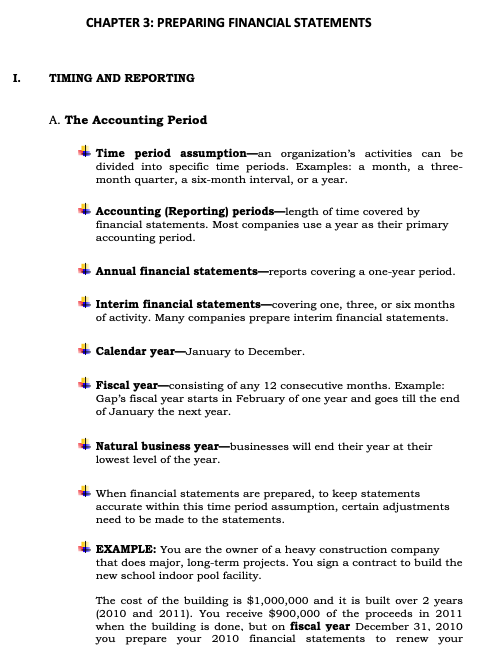Preparing Financial Statements in Accounting
Summary:
Chapter 3: Preparing Financial Statements covers crucial aspects of accurate financial reporting. It begins by explaining the accounting period assumption, dividing activities into specific periods, and using annual and interim financial statements. A comparison between accrual and cash basis accounting is highlighted, emphasizing the significance of recognizing revenues and expenses when earned or incurred. The chapter underscores the matching and revenue recognition principles to ensure precise income and expense allocation. Adjusting accounts through four categories, including prepaid and accrued expenses, further enhances the accuracy of financial statements. The closing process involves recording temporary and permanent account entries, leading to a post-closing trial balance. Lastly, the classification of assets and liabilities in the classified balance sheet is explored, enabling decision-makers to gain valuable insights from the financial data presented.
Excerpt:
Preparing Financial Statements in Accounting
CHAPTER 3: PREPARING FINANCIAL STATEMENTS
I. TIMING AND REPORTING
- The Accounting Period
- Time period assumption—an organization’s activities can be divided into specific time periods. Examples: a month, a three-month quarter, a six-month interval, or a year.
- Accounting (Reporting) periods—length of time covered by financial statements. Most companies use a year as their primary accounting period.
- Annual financial statements—reports covering a one-year period.
- Interim financial statements—covering one, three, or six months of activity. Many companies prepare interim financial statements.
- Calendar year—January to December.
- Fiscal year—consisting of any 12 consecutive months. Example: Gap’s fiscal year starts in February of one year and goes till the end of January of next year.
- Natural business year—businesses will end their year at their lowest level.
- When financial statements are prepared, to keep statements accurate within this time period assumption, certain adjustments need to be made to the statements.
- EXAMPLE: You own a heavy construction company that does major, long-term projects. You sign a contract to build the new school indoor pool facility.
-
The building cost $1,000,000, and it is built over 2 years (2010 and 2011). You receive $900,000 of the proceeds in 2011 when the building is done, but on fiscal year December 31, 2010, you prepare your 2010 financial statements to renew your insurance with the bonding company.
-


Reviews